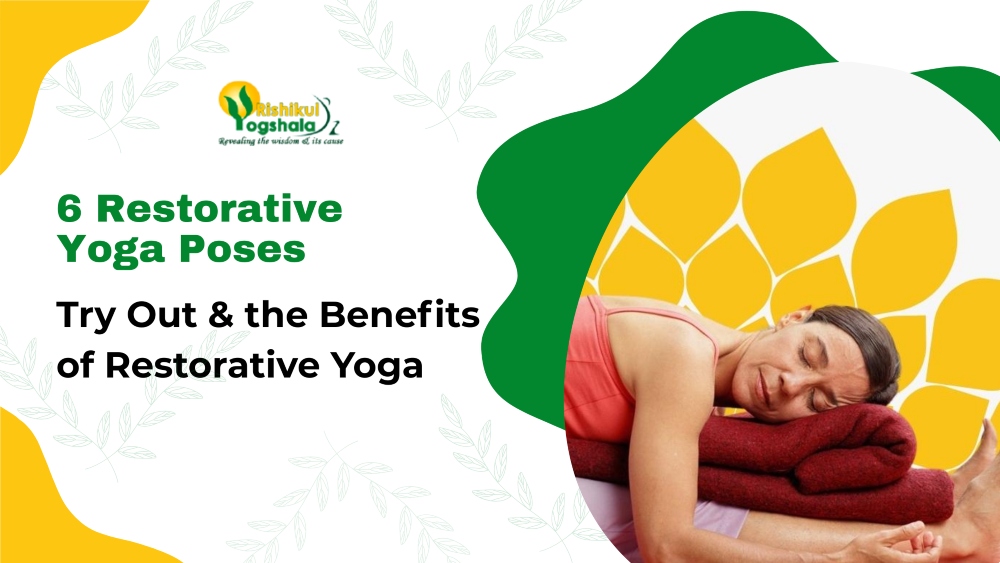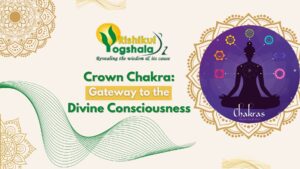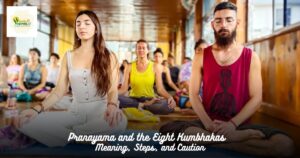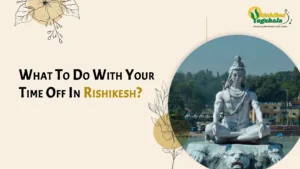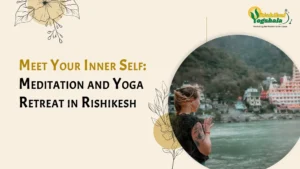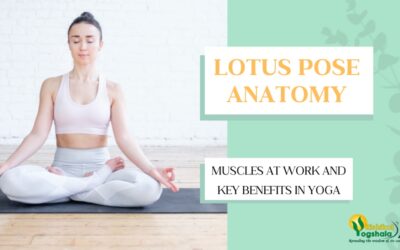How did you sleep last night? Or even better, how did you feel this morning when you woke up? Did you feel drowsy and exhausted, snoozing your alarm for the hundredth time this year?
Don’t worry, we have all been there.
Sometimes it seems like you’re running in circles, juggling several obligations and expectations in exchange for a poor night’s sleep. You want to begin your day feeling rejuvenated and with a physique that is so loose that you won’t be burdened just by a mailbox full of important emails.
Yoga promotes physical, cognitive, and emotional tranquillity. Restorative yoga is performed slowly and is suitable for all levels, emphasising extended hold times of each pose, quietness, and deep breathing. We cover more of this in our 200 hour yoga teacher training program. For an interpersonal program, enrol yourself with us today!
In this blog, we will be sharing with you 6 yoga restorative poses that help you achieve calmness while also adding physical health benefits.
What is Restorative Yoga?
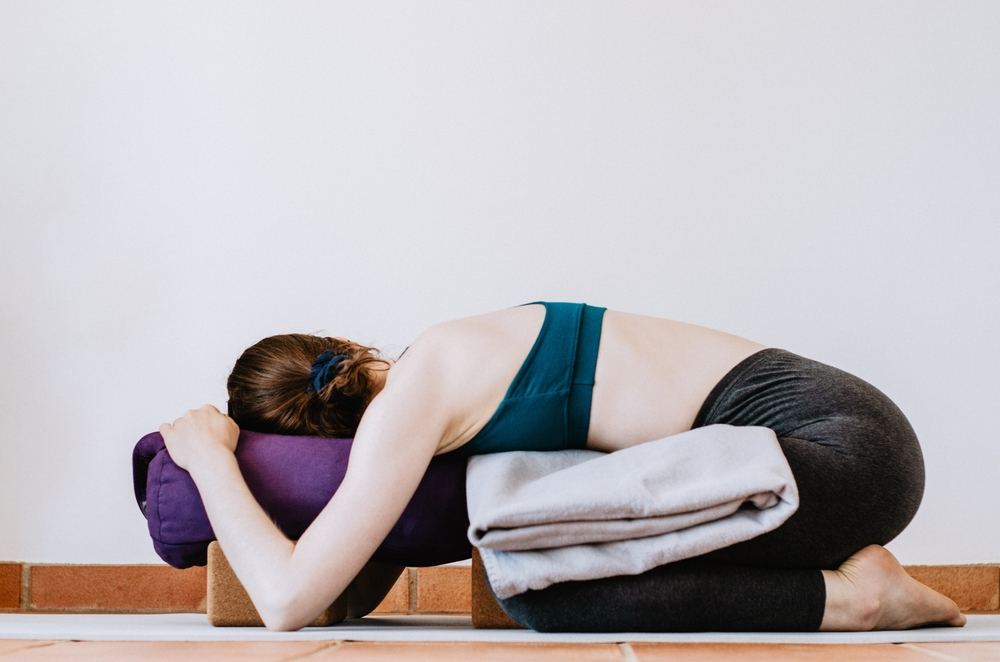
A mild kind of yoga known as restorative yoga focuses on passive stretching to help you calm down and expand your body. Since you maintain the positions in a restorative yoga session for two to ten minutes, it differs greatly from other types of yoga.
Yoga props are used in a restorative session to provide support, which encourages the body and mind to actively relax, making it possible to hold the postures almost easily.
Also Read: Utthita Parsvakonasana: Benefits, Variations & Common Mistakes
Restorative Yoga Benefits
Your body and the neurological system will be affected by restorative yoga in both a physical and medical sense. There are many solid pieces of evidence to incorporate a session of these yoga postures into your regular yoga routine. We’ve listed them here:
- Soothing the nervous system: When practising this yoga, the sympathetic nervous system is replaced by the parasympathetic nervous system, which controls relaxation.
- Reduces recurring aches: Studies have shown that these yoga poses may alleviate the pain associated with osteoarthritis, headaches, and backaches.
- Relaxes both your body and mind: Yoga has been associated with decreased levels of cortisol, the stress hormone, and tension and anxiety.
- Enhances well-being: Researchers have discovered that doing yoga frequently may lead to decreased stress levels, as well as less fatigue, an energy boost, and improved well-being.
- Quicker recovery: Restorative yoga is generally suggested to those who have recent or ongoing injuries since it is usually safe.
- Enhances sleep: Including yoga in your daily practice may improve the quality of your night’s sleep.
- Boosts your mood: According to studies, yoga encourages deep breathing and relaxation, which may lessen the symptoms of depression.
- Long-term chronic medical issues: People who have a chronic ailment may benefit from regular yoga practice.
Now that we know the benefits of restorative yoga, let us take a look at how to perform each of these yoga poses and how they benefit us.
6 Restorative Yoga Poses
Are you ready to learn which postures in this yoga suit you the most? Here are some of our favorite positions for relaxation to get you going:
1. Balasana or Supported Child’s Pose
Your hamstrings, spine, glutes, shoulders, and hip muscles are very gently stretched in this restorative yoga pose. As a result, it also relieves tension and exhaustion. If your head and torso are supported, it can help ease back and neck discomfort.
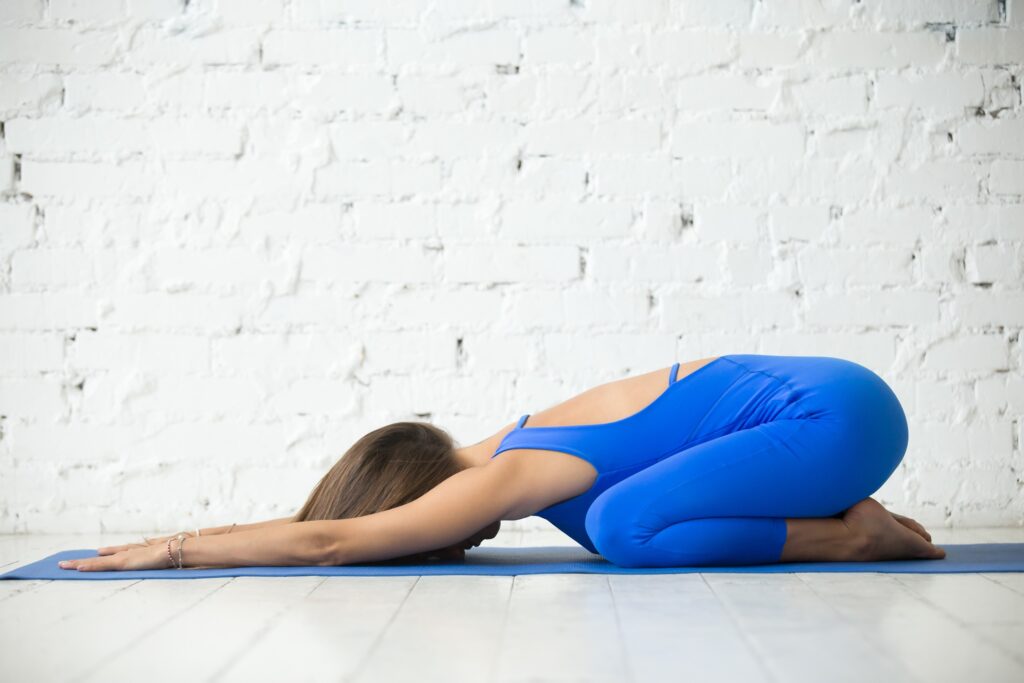
Balasana: Step-by-Step Practice Restorative Yoga Poses
- Start by getting down on your knees. Spread your knees a little wider than hip distance.
- Reaching forward with your arms, bringing your head to the floor, now bring your buttocks to your heels.
- Your hands can either be at your feet or stacked beneath your forehead like a cushion.
- Take a few minutes to relax here.
Balasana: Benefits of Restorative Yoga
This is a restorative, healing position that complements backbends by gently stretching the spine. It inclines the head so the heart can rest rather than straining to drive blood upward to the brain, which is psychologically comforting when you’re feeling chilly, worried, or vulnerable.
2. Setu Bandha Sarvangasana or Supported Bridge Pose
This yoga pose could feel the most comfortable of all. Your mind and spine will feel both liberated and relaxed while you rest in this position.
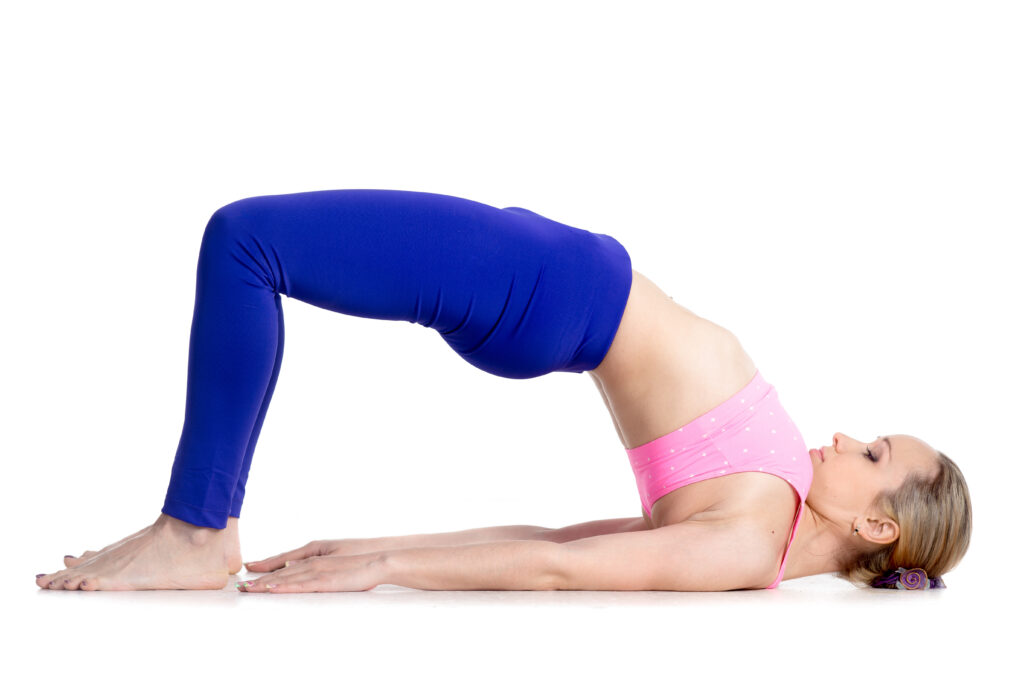
Setu Bandha Sarvangasana: Step-by-Step Practice Restorative Yoga Poses
- Put a bolster or rolled-up blanket across your mat and beneath your sacrum while you recline on your back.
- Keep your feet on the ground and your legs bent. Open your arms next to your body. Allow your lower back and hips to fully rest on the cushion.
- Take a seat here for up to ten minutes, and snuggle up with a blanket.
Setu Bandha Sarvangasana: Benefits of Restorative Yoga
There are several advantages to this yoga position. It benefits your heart to relax. Additionally, it also makes room for the body’s diaphragm to unwind and move freely. You may experience relief from lower back discomfort.
3. Viparita Karani or Supported Legs on the Wall
The supreme pose for relaxation! The legs-up-the-wall position gently stretches your neck and hamstrings while also relieving your tired feet. It may also assist with moderate backaches.
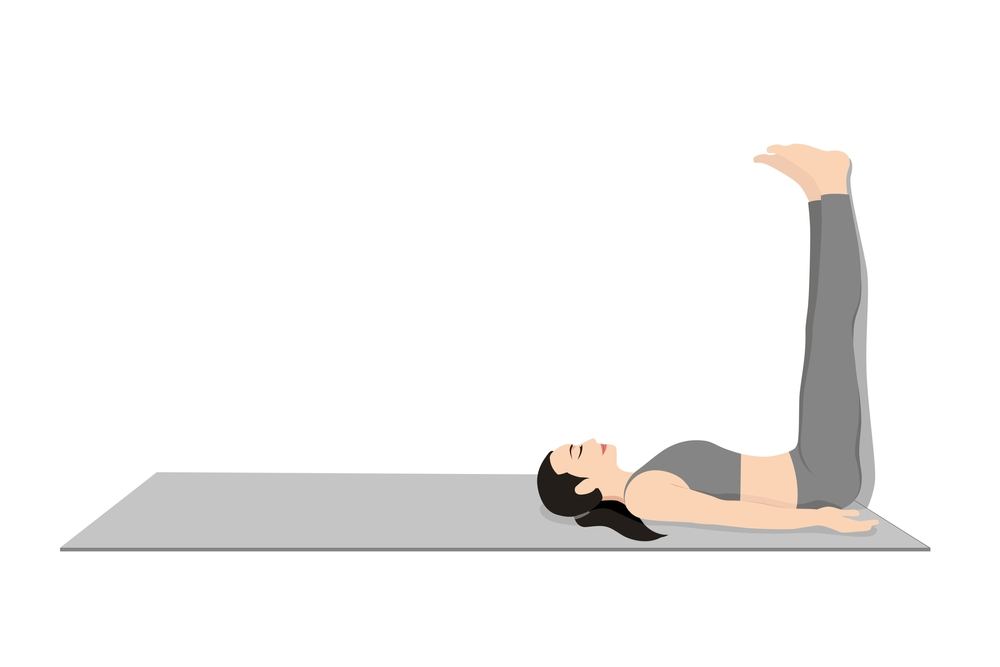
Viparita Karani: Step-by-Step Practice Restorative Yoga Poses
- A few inches should separate the bolster from the wall. Your lower back will be supported by the bolster.
- Put your right side up against the wall while you lean sideways on the bolster. Gently swing your legs up toward the wall while lowering your head and shoulders to the floor.
- Put your body in the pose as your body permits (coming into this pose can take some practice). With your legs at a comfortable angle against the wall, rest your sacrum and lower back on the bolster.
- Try several positions until you discover one that suits you. shoulders on the mat, relaxed neck, and hair on the head.
Viparita Karani: Benefits of Restorative Yoga
- The downward flow of chi (energy) is reversed when your legs are higher than your head and heart, reviving the flow of blood throughout your body. This position is very relaxing and excellent for relieving tension if you are anxious, exhausted, or jet-lagged.
- Matsyasana or Supported Fish Pose
- Do you spend a lot of time each day at your desk? If so, you should definitely try this yoga pose.
Also Read: The Healing Power of Legs Up the Wall Pose: Exploring Its Benefits in Yoga
4. Matsyasana: Step-by-Step Practice Restorative Yoga Poses
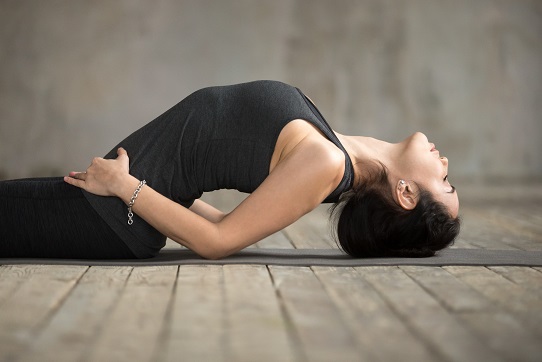
In the middle of your mat, keep two folded blankets and a bolster, parallel to one another with a thin space between them.
- Sit down and place the covers behind your back.
- Put your shoulder blades on the blanket that is closest to you when you recline. On the second blanket, put your head down. Your legs can either be spread out in front of you or folded.
- Your arms should be at your sides or extended above your head with the palms facing up.
- Take a few deep breaths and close your eyes to relax your body. Your entire body will feel as though it is sinking into the floor and covers.
- Spend at least ten minutes in this position. Concentrate on taking deep breaths and relaxing your muscles.
Matsyasana: Benefits of Restorative Yoga
- This backbend is soothing and healing. By opening the front body, the intention is to unwind and revitalise. Allow yourself to unwind and let go because the majority of us devote so much of our time to the wrong posture, hunched over a laptop.
- Supta Baddha Konasana or Reclining Bound Angle Pose
- Want to unwind at the end of a busy day? Try the Reclining Bound Angle Pose, also known as the Reclined Butterfly.
Also Read: Matsyāsana Magic: Channeling the Vitality and Wisdom of Fish Pose
5. Supta Baddha Konasana: Step-by-Step Practice Restorative Yoga Poses
- Initially, lie on your back.
- Bring your feet as near to your pelvis as you can while bending your knees.
- The soles of the feet should meet when you extend your knees out to the sides.
- To lessen the discomfort of the strain in your inner thighs, place bolsters beneath both knees.
- You can lay your hands on your tummy or spread your arms out to the sides.
- Sit there for a minimum of five minutes, breathing slowly and steadily.
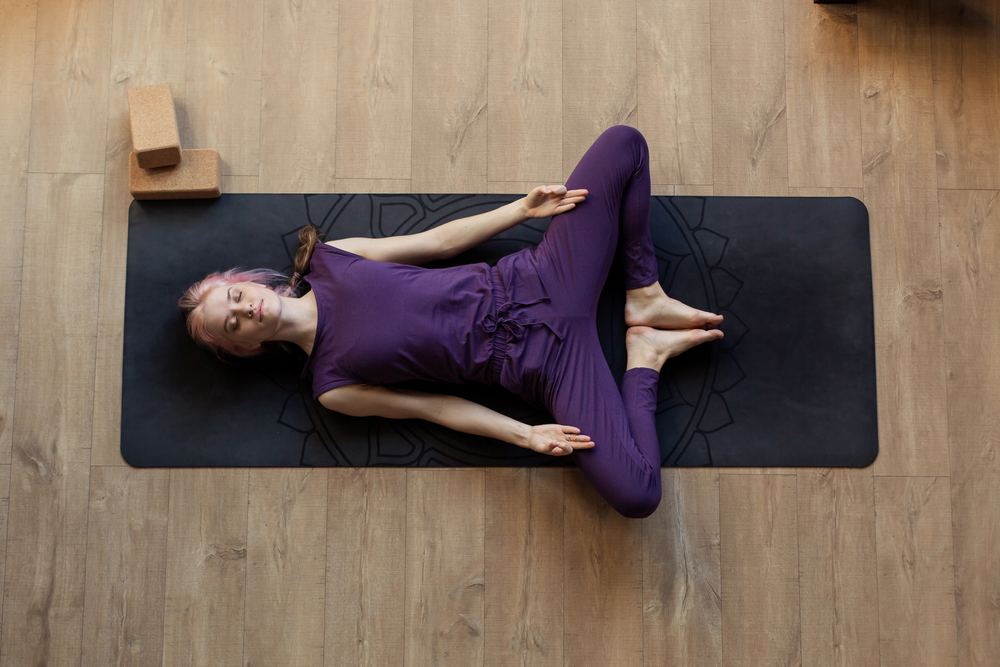
Supta Baddha Konasana: Benefits of Restorative Yoga
- This position stretches the inner thighs and pelvic region and aids in circulation improvement. It aids in easing menstrual cramps, moderate sadness, and stress symptoms.
- Eka Pada Rajakapotasana or Sleeping Pigeon Pose
- For those with sciatica, the sleeping pigeon position is the ideal restorative yoga pose.
Also Read: Power of Baddha Konasana: Pose, Benefits and Variations
6. Eka Pada Rajakapotasana: Step-by-Step Practice Restorative Yoga Poses
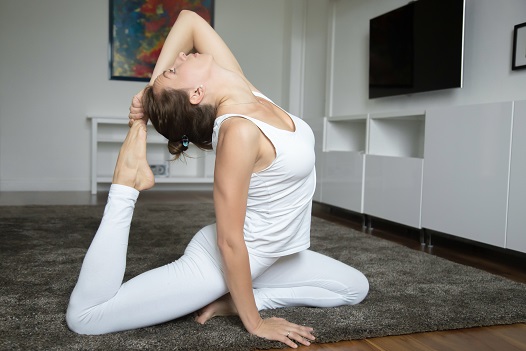
- You must begin on all fours in order to get to this restorative yoga posture.
- With the knee slightly bent to the right and the foot near your pelvis, lift your right leg and place it at the front of the mat.
- Ensure that the leg on the back is straight and facing backwards.
- To assist the hips in aligning, place a block beneath the right sitting bone.
- Fold forward onto the right leg, placing one or two bolsters on the inside of it.
- Keep your inhalations and exhalations at the same duration, and hold the pose for at least five minutes.
- On the opposite side, repeat.
Eka Pada Rajakapotasana: Benefits of Restorative Yoga
Now, what are the benefits of this restorative yoga pose? It increases flexibility in the body by opening up the hip joint, stimulates the internal organs, and provides a great stretch for the thighs.
Conclusion
A restorative yoga session may be quite therapeutic. Your overall quality of life will significantly improve if you master only a few yoga poses and mind-body techniques. And if anything feels a bit out of reach, use a few supports, such as a cushion, pillow, or bolster.
Whether you want to discover a restorative sequence to reduce anxiety, relax the mind, extend your spine, find a good balance in your yoga practice, loosen up your tight hamstrings, or just explore the many types of yoga, there are many reasons to consider doing so. After all, restorative yoga is for everyone.
For those interested in deepening their yoga journey, consider enrolling in a yoga teacher training program. Rishikul Yogshala, a leading Yoga school in Rishikesh, offers comprehensive courses like the 100 Hour Yoga Teacher Training In Rishikesh, 200 Hour Yoga TTC In Rishikesh, 300 Hour Yoga Teacher Training In Rishikesh, and 500 Hour Yoga Teacher Training Rishikesh. These programs are designed to help you master your practice and share the transformative power of yoga with others.
Restorative Yoga Poses – FAQs
1) What are restorative yoga poses?
In a restorative yoga practice, props are utilized to offer support, which helps the mind and body to intentionally relax and makes it easier to maintain the postures almost effortlessly.

